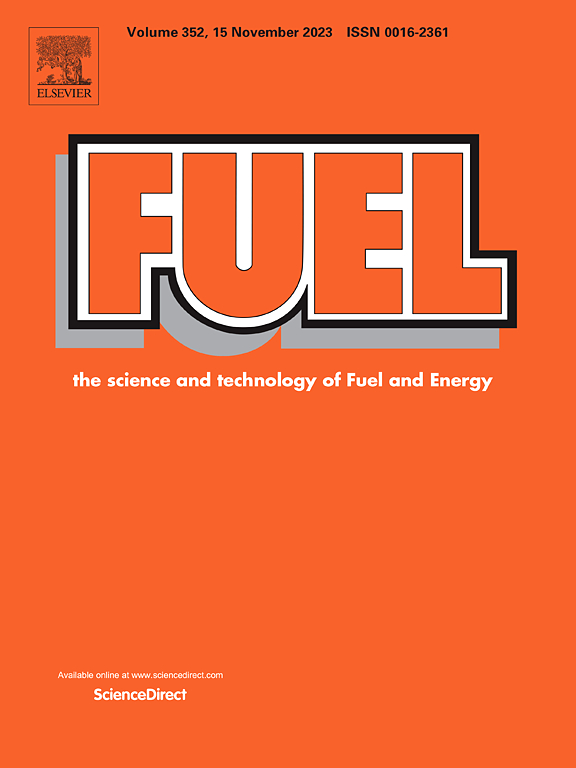The regulating effect of zeolite types on catalytic aromatization of propane: The distributions of evaporable aromatics and non-evaporable polycyclic aromatics
IF 6.7
1区 工程技术
Q2 ENERGY & FUELS
引用次数: 0
Abstract
Zeolites catalyzed aromatization is important process for value-added utilization of light alkanes. This paper report the effect of zeolite types on the aromatization of propane. ZSM-35 (8, 10-MR), ZSM-5 (10, 10-MR), and MCM-22 (10, 12-MR) zeolites were modified with Zn and employed as catalysts of propane aromatization. The results showed that there is no significant difference in the amount of [ZnOH]+ and ZnO species among three zeolites, the major influence to aromatization come from pore structures and their acidities. Online analysis at reactor outlet to the evaporable products indicate that, Zn/ZSM-35 catalyst exhibits lowest propane conversion, weak aromatization performance and rapid deactivation characteristics, conversely, its olefin selectivity reaches a high level. Zn/ZSM-5 catalyst shows the best propane conversion rate, aromatization activity and stability, it also shows the highest naphthalenes selectivity. Zn/MCM-22 zeolite exhibits moderate propane conversion rate, aromatics/olefin selectivity, and it shows higher alkylbenzene selectivity but low naphthalenes selectivity in aromatics, this is due to its 10, 12-membered ring pore channel. Here also provides data about the high boiling point non-evaporable polycyclic aromatics (PAHs), which is deposit on the catalyst in soluble coke form. TG analysis of spent catalyst found that Zn/ZSM-5 catalyst has the smallest amount of coke and PAHs form of coking precursor, only 1.3 %, while Zn/MCM-22 shows the highest data of 8.6 %, that of Zn/ZSM-35 is 5.1 %. The PAHs on the external surface area of catalyst were obtained by extraction with toluene, the PAHs inside zeolite pores were obtained by toluene extraction after the above extraction step and then HF destruction to the zeolite framework. FT-ICR MS analysis data indicates that PAHs inside Zn/ZSM-35, Zn/ZSM-5 and Zn/MCM-22 pore consist of 2–5, 3–5 and 3–6 aromatic rings, and PAHs on the external surface is about one aromatic ring more than the PAHs inside the pores. The low selectivity of Zn/MCM-22 to naphthalenes is attributed to large pore space of it, it makes the generated naphthalenes undergo a condensation reaction to coke. It shows a good correlation between aromatics distribution, catalyst pore structure and acidity. The aromatics distribution data are valuable information for industrial catalyst and process design.
求助全文
约1分钟内获得全文
求助全文
来源期刊

Fuel
工程技术-工程:化工
CiteScore
12.80
自引率
20.30%
发文量
3506
审稿时长
64 days
期刊介绍:
The exploration of energy sources remains a critical matter of study. For the past nine decades, fuel has consistently held the forefront in primary research efforts within the field of energy science. This area of investigation encompasses a wide range of subjects, with a particular emphasis on emerging concerns like environmental factors and pollution.
 求助内容:
求助内容: 应助结果提醒方式:
应助结果提醒方式:


